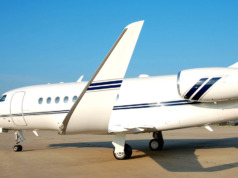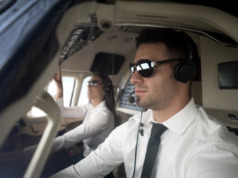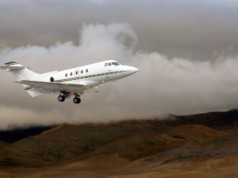
Imagine this conversation between a first-time aircraft buyer and a consultant, which describes how to establish an in-house flight department:
Buyer: My Board recommended we buy a super mid-sized jet for our North American and EU travel. What do we need to know?
Consultant: How did you decide on the aircraft you’re buying?
Buyer: We conducted a needs analysis, and found that we would be best served by a nearly new, 8- to 10-passenger jet designed and equipped for transoceanic trips. Based on our requirements for privacy and control, we want an internal department. We don’t need to consider chartering our aircraft out when we’re not using it, since we don’t need the marginal revenue or tax benefits. Our search agent says it will take us at least 90-120 days to take delivery of the right aircraft.
Consultant: That leaves you no spare time to get your department up and running. To start, answer this most important question: “What is your company’s strategic intent and how will your aviation services support it?”
Buyer: Our primary growth strategies are geographic diversification and acquisition of competitors. Our aircraft must get us where we need to be, when we want, rested and ready to do business.
Consultant: Will you be traveling mostly on weekdays? Do you usually have three days or more lead time for your trips, or do they tend to be more spontaneous?
Buyer: No to both. We will frequently travel on Sundays to position for Monday meetings, both in the U.S. as well in Western Europe. As we begin to enter new markets and respond to potential acquisition opportunities, our travel will become much more responsive and unpredictable in nature.
Consultant: It sounds like your mission is to be able to respond, upon reasonable notice, seven days per week in support of the strategic growth of the company. Now tell me what deliverables and quality you expect.
Buyer: I want our aviation services to be at least as safe as our major domestic airlines, I want flexibility, and of course, I want to save money.
Consultant: The term “safe” is difficult to quantify. I suggest you focus on identifying and mitigating risks to achieve exposure levels you are willing to endure. That is, shift from “reactive safety” approaches driven by avoiding errors others have previously made, to a more proactive approach focused on risk management, by implementing a Safety Management System (SMS) (See: “Getting to Zero”).
Buyer: What do I need to know about reporting and staffing? Should the new department report to me, since I will be its primary customer as well as the approver of all aircraft use?
Consultant: While many top executives choose to control their aviation services by being the trip authorizers, or at least by reviewing all requests, I recommend that the department report to someone at the C-Suite level who has the time to support the department’s various administrative, organizational, and operational needs – such as your Chief Administrative Officer.
Regarding staffing, your aviation department’s leader and staff are the most critical parts of your new aviation department. It is a business unit, with its own roles, responsibilities, and operational and financial responsibilities. Most executives to whom aviation departments report say that aviation takes up the highest proportion of their time. So, set your hiring standards as you would for any other support unit in your company.
Safety is the second reason for hiring only those whose aptitudes, attitudes, behaviors, and experience are among the best. Anything less and you will be inducing risks you may not want to tolerate. Even though the accident rate for professionally flown aircraft continues to decline, the greatest primary cause of accidents remains unchanged: 70% are caused by human error.
Buyer: Aren’t those kinds of aviation professionals expensive and hard to find?
Consultant: Actually, no. Highly qualified people want to be part of a great company and department, to feel appreciated, and to feel that they are contributing to the company’s success. If the quality of work life is good, you should be able to attract excellent people without paying a premium.
Buyer: So how many people are needed to run this aircraft? I’ve heard that I need only two pilots and a mechanic. What do you think?
Consultant: I recommend you start with four pilots. Most department directors are pilots whose duties take them out of the cockpit for a good part of the time. Most large companies require that all their pilots be captain-qualified to assure a higher level of experience in the cockpit, as well as rotational flexibility.
Buyer: That sounds like more staff than we really need.
Consultant: Let’s do the math. After you eliminate weekends, holidays, vacation days, training days, and other time away, a pilot is available for trip duties about 190 days per year. Based on your requirement of six days per week of support, you will need 624 pilot duty days of coverage. Divide that by 190 days available per pilot and you will need a staff of 3.3 pilots. But your Director will need to spend about ½ of his or her time running the business.
And definitely consider hiring a dedicated mechanic. That role is the only one that routinely pays for itself, by saving more in costs and excessive aircraft down time than his or her fully loaded compensation package.
Set your hiring standards as you would for
any other support unit in your company
Buyer: Can my Executive Assistant handle scheduling, so we don’t need an administrative person at the airport?
Consultant: That is a false economy. Your aviation department is a business unit with a seven-figure annual cash flow. Additionally, your crew will be busy operating and maintaining the aircraft. A scheduler/office manager can relieve them of a great deal of administrative work, as well as improve the information flow between them and your office: a very reasonable investment for a great deal of benefit.
Buyer: What about training?
Consultant: Be sure your aviation department is staffed and budgeted not only for technical or recurrent training, but also for professional development: leadership, managerial, and organizational skills. An experienced staff will bring the templates and know-how to develop operational standards, policies, manuals, and budgets.
Buyer: Speaking of budgets, what do you recommend about internal charge backs? Are there tax implications?
Consultant: There are many ways to distribute the cost of aviation services. The most often used model is to charge the lead passenger or business unit for the direct operating costs of the trip. That gives the requestor a sense of cost impact while not making the price so high that they would seek a less efficient and cheaper mode of travel, like the airlines.
Since your aviation services are an internal unit outside the arena of your core business’ expertise, you will benefit from the services of at least two different experts. An aviation attorney will support the acquisition, as well as develop the structure within which the aircraft is held. And since there are a number of taxes on aircraft and their operations imposed by states as well as by the Federal and foreign governments, do engage an aviation accountant.
Buyer: What else do we need to know?
Consultant: The most frequent source of damage to business aircraft is ground handling incidents. Find hangar space that is either private or shared with only a few high-quality co-tenants to minimize the potential for significant damage to your aircraft, loss of its availability while it is being repaired, and the reduction in its residual value.
As this fictional dialogue illustrates, careful planning to properly structure and staff your new flight department will insure that your new aircraft will deliver the safe, efficient executive transportation you require. BAA
Pete Agur, Jr. is chairman/founder of The VanAllen Group, a management consulting firm specializing in the business of business aviation. With an MBA and a BS in Aeronautical Sciences, he is an NBAA Certified Aviation Manager.




